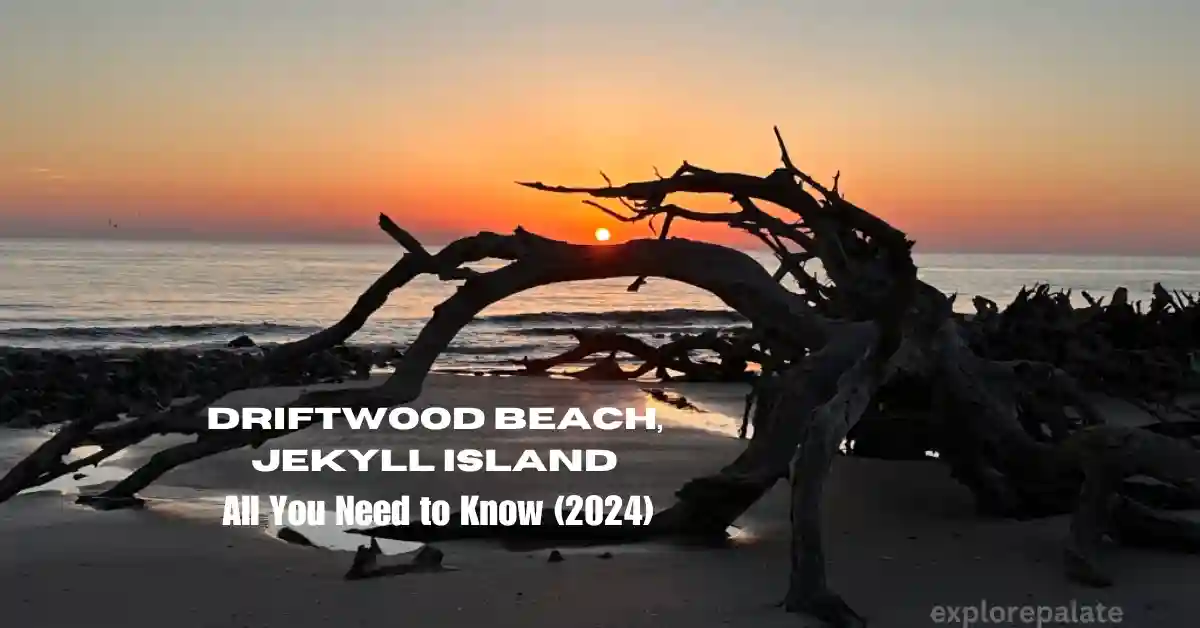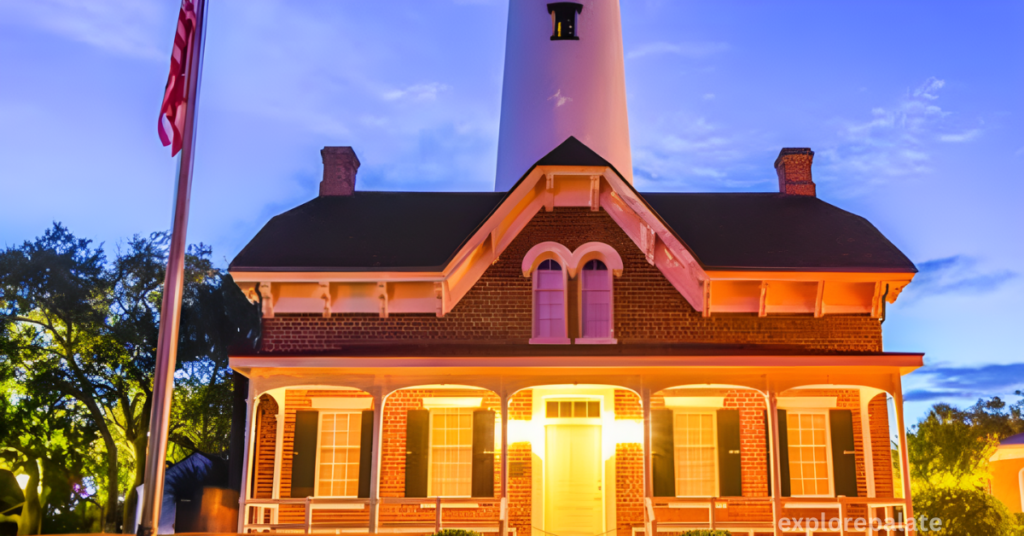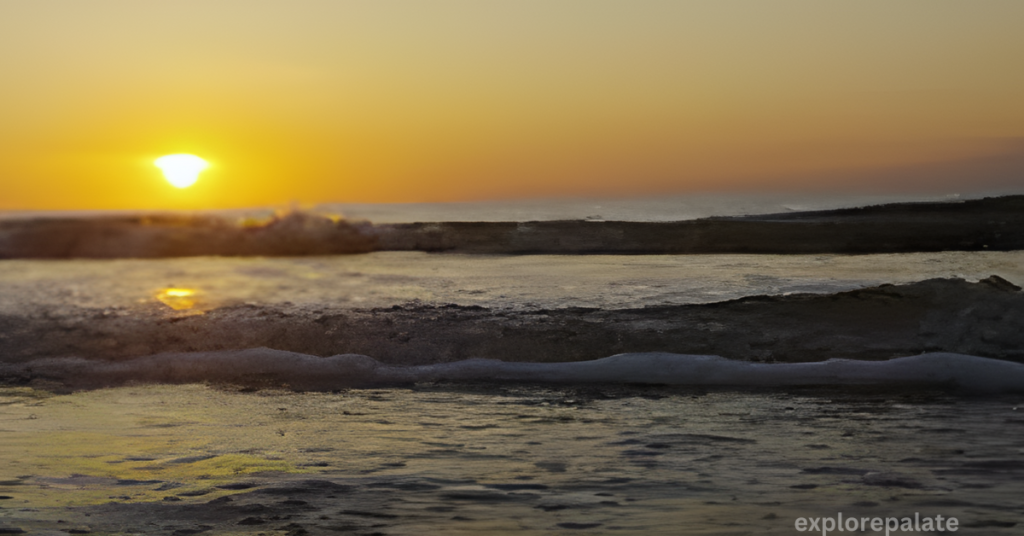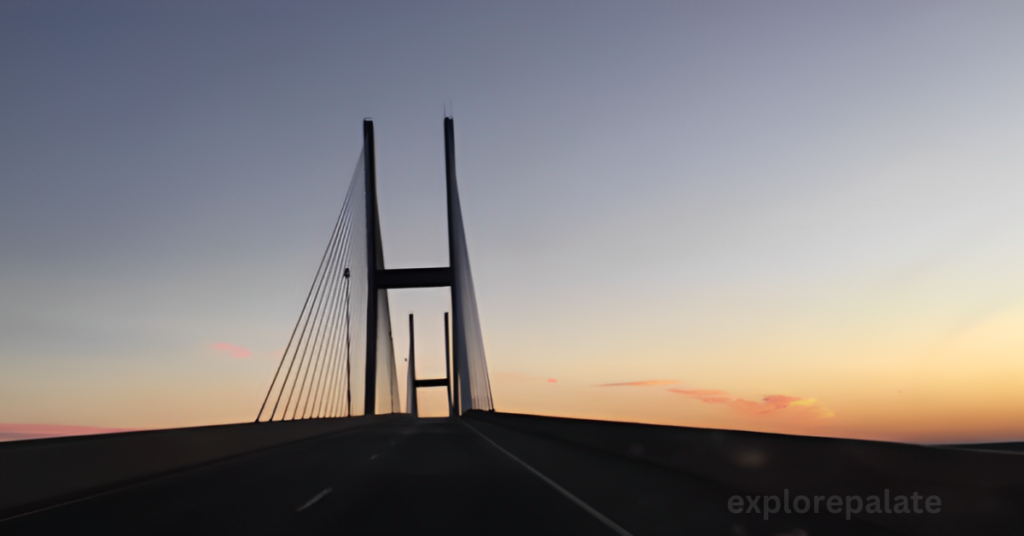Nestled on the coast of Jekyll Island, Georgia, Driftwood Beach offers a hauntingly beautiful landscape that effortlessly blends the tranquil charms of the South with a rugged, untouched coastline. As we look towards 2024, this picturesque destination continues to captivate visitors with its swathes of weathered driftwood strewn across the shore, forming natural sculptures that leave a lasting impression. Whether you’re planning to soak in the temperate climate, indulge in photography, or explore the rich history and nearby attractions, Driftwood Beach is a testament to nature’s artistry—where every visit promises a new discovery and a serene retreat from the bustling world beyond its sandy borders.
Where Is Driftwood Beach?
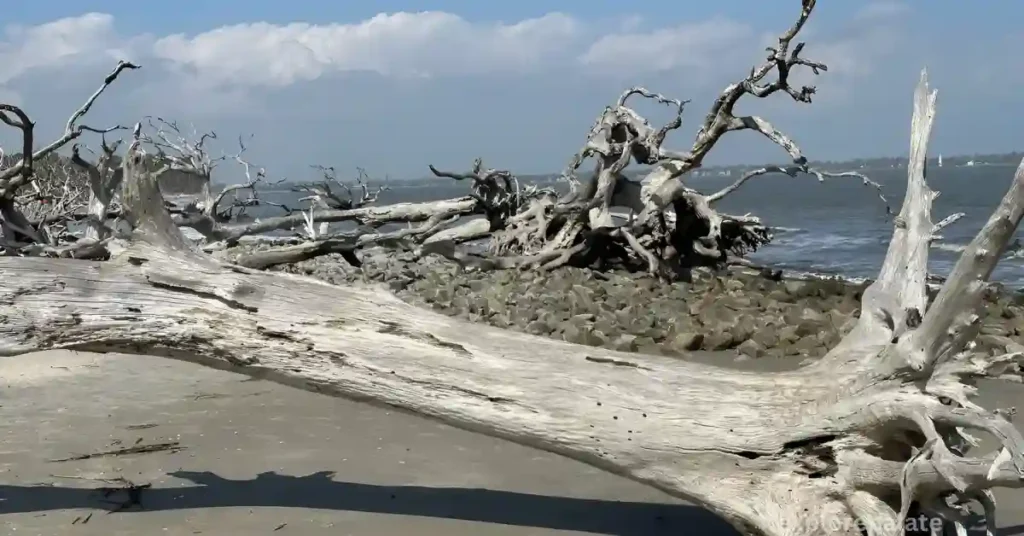
Nestled on the southern coast of the Golden Isles of Georgia, Driftwood Beach sits as an enchanting location, boasting its skeletal remains as a destination rich in ambiance. At the north end of Jekyll Island, the shoreline is embellished by uprooted driftwood trees, forming a graveyard-esque view against the coastal view of St. Simons Island.
Accessing Driftwood Beach
The journey to Driftwood Beach begins at Jekyll Island State Park, where a daily entrance fee of $10 per vehicle grants access to the breathtaking landscape. Several access points from the beach parking lot on N. Beachview Dr. to the southern picnic area make the journey easy and enchanting.
How Driftwood Beach Was Created
This magnificent beach was shaped by the relentless forces of Mother Nature, with weathered, bone-white tree trunks creating contrasts against the powdery sand. The maritime forest succumbed to erosion, with oceanic waves and sands creating an unforgettable backdrop that keeps evolving with the tides and seasons.
What Happened at Driftwood Beach, Jekyll Island?
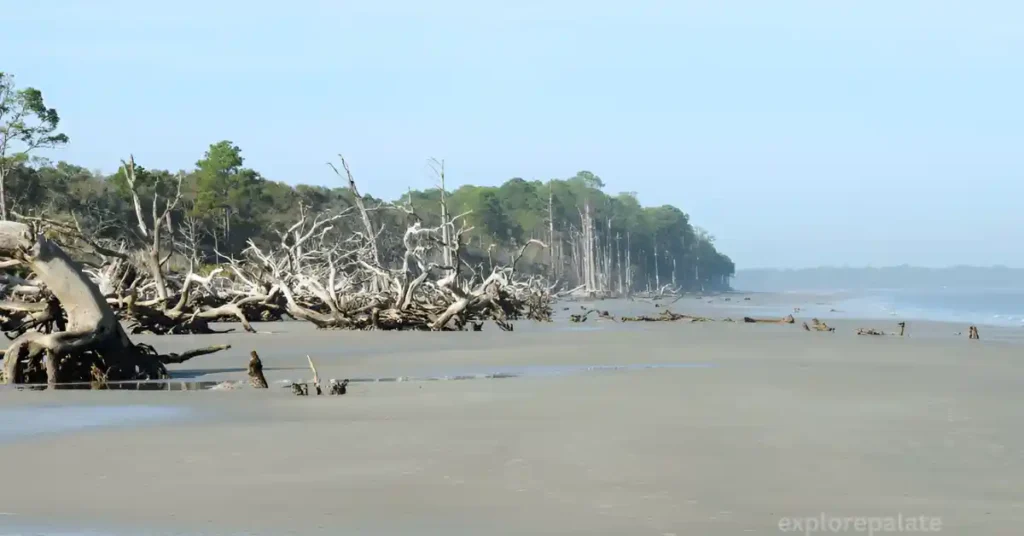
The post-apocalyptic landscape with its gnarled tree trunks stands as a testament to a bygone forest, now a mirageously beautiful stretch known as “boneyard beach”. A victim to erosion, ancient oak trees are reduced to hauntingly beautiful driftwood, a stark reminder of the strong winds, tides, and sea’s effects on the environment.
When Is The Best Time To Visit Driftwood Beach?
Visiting Driftwood Beach can be a majestic experience any time of year, but April through October offers a warm weather respite. However, if a solitary experience calls to you, the winter months will offer just that. Be sure to check the Jekyll Island tide chart, as the low tide reveals an otherworldly landscape ideal for exploration.
Low tide vs. high tide at Driftwood Beach Georgia
Understanding the tide change is crucial for planning your visit. With typically two high and two low tides each day, navigate the timing to explore the driftwood maze best or climb the trees’ weathered branches.
On our visit, we immersed ourselves in the sheer beauty and reality of a world where Mother Nature’s touch turns driftwood into a scenic gem on Georgia’s East Coast. The destination delivers a unique and beautiful landscape unlike any other, offering an otherworldly experience where one can truly witness the magnificent intertwining of life and the remains of a past world.
Driftwood Beach Weather

Driftwood Beach on Jekyll Island, Georgia, offers a climate so pleasant, it beckons travelers year-round. The maximum temperature averages around 80˚ F (27˚ C) while the minimum can dip to 59˚ F (15˚ C). On this island, storms can come in and out quickly, and the dry spells make for clearly distinct seasons.
Nearby Attractions
The Great Dunes Beach Park and South Dunes Beach Park are beaches not far from Driftwood Beach, providing a diverse experience on the same island. Nearby, the Georgia Sea Turtle Center offers rehabilitation and interactive exhibits with a nominal entry fee—a visit helps support their cause. For those seeking an unforgettable experience, a dolphin cruise emerges as a favorite activity. It’s affordable and a great way to see dolphins and other local wildlife amidst stunning scenery—be sure to make a reservation.
Cross over to the opposite end of the island in summer, and find yourself in the National Historic Landmark District, once the richest and most inaccessible club in the world. This 240-acre site is undergoing various restoration projects to preserve its elegant cottages, churches, and infirmary that stitch together the intricate history of the southeastern United States.
Summer
The warmest and wettest season, summer sees July as the hottest month and August as the rainiest. Average highs range between 85˚ F and 95˚ F (29˚ C and 35˚ C) and the lows hover between 70˚ F and 75˚ F (21˚ C and 24˚ C). The humidity can make it feel hot, with Real Feels soaring past 100˚+ F (38˚+ C).
Autumn
Temperatures drop from late September to November, with highs of 75˚ F to 85˚ F (24˚ C to 29˚ C) and lows of 50˚ F to 70˚ F (10˚ C to 21˚ C). Fall tends to be drier than other seasons, and it’s a superb shoulder season to visit, avoiding the peak traveling rushes.
Winter
January takes the title of the coldest month at Driftwood Beach, yet the weather in winter is fairly mild. Expect highs in the 60s˚ F (15˚ C to 21˚ C) and lows in the 40s˚ F to 50s˚ F (4˚ C to 15˚ C).
Spring
When Spring warms the air from March to May, the temperature again climbs to highs of 75˚ F to 85˚ F (24˚ C to 29˚ C) and lows of 50˚ F to 65˚ F (10˚ C to 18˚ C). The tourist season picks up steam around Spring Break, starting in late February to early March.
Photography At Driftwood Beach
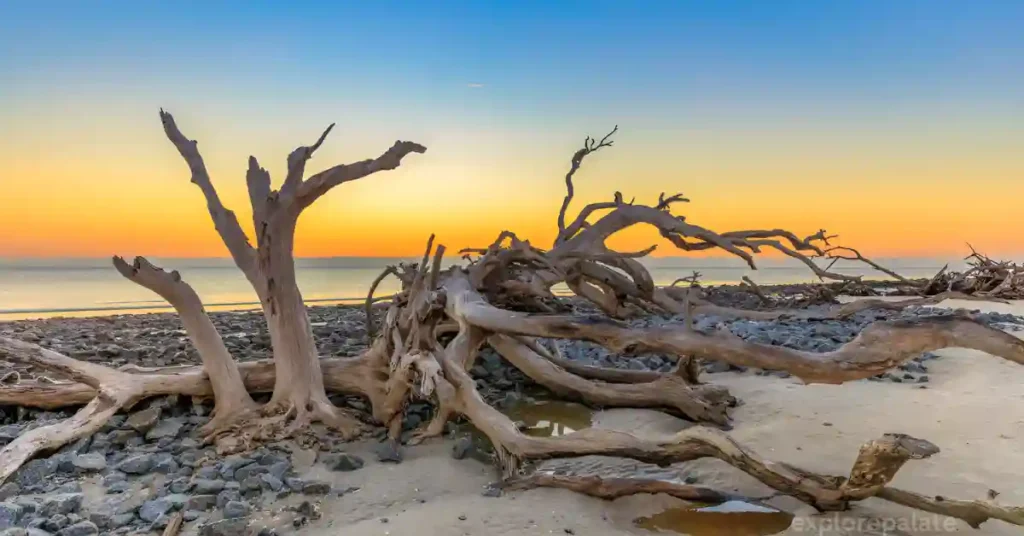
The rustic beauty and apocalyptic landscapes make Driftwood Beach a paradise for landscape photographers. The prime hours of the day and time of year are during sunrise and sunset, those so-called golden hours when crowds are thinner. Photographers get there early and often linger after the sun rises or sets, armed with a tripod for those long exposures. It’s crucial to plan.
Sunrise and sunset
Sunrise and sunset times vary dramatically throughout the year, with Daylight Savings in Spring and Fall impacting them significantly. TimeAndDate is an excellent resource for checking times and confirming twilight hours, as well as for any moonrise, moon phases, or expected eclipses.
Do People Swim At Driftwood Beach?
Despite the blue color of the marshes and Savannah Rivers, few opt to swim here. The sediment and wave pattern formed by the Altamaha River can be notorious for churning up the water, creating an appearance that might not seem as inviting. However, the brown, nutrient-rich waters are often misjudged as dirty, when in fact, they’re safe and full of energy from the tannins. Driftwood Beach is a tidal-formed sandy beach, less turbulent than open oceanic waves, ideal for those looking for a safe and serene ocean experience.
Can You Take Driftwood From Driftwood Beach?
While the driftwood creates an incredible artwork on the beach, it’s prohibited to collect. Other natural materials like shells and sand dollars are also popular items visitors wish to take home, but they should be left behind, preserving Driftwood Beach as an unspoiled natural décor.
Are Dogs Allowed On Driftwood Beach, Jekyll Island?
This dog-friendly beach allows dogs as long as they are on a leash and under the owner’s control. It’s essential that people clean up after their pets to protect the protected species, and plant and animal life that depend on the natural barrier the sand dunes provide against tides, waves, and winds. And during sea turtle nesting season from May to August, it’s particularly important to keep away from the turtle nesting grounds.
Can You Camp On Driftwood Beach Georiga?
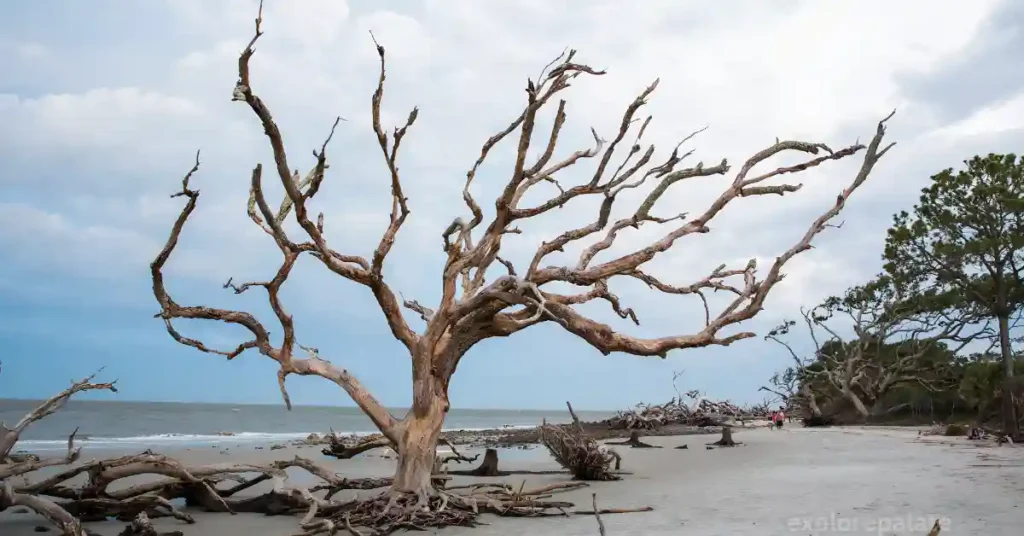
While camping on the beach itself is not allowed, the nearby Jekyll Island Campground is located just ½ mile away, offering a mix of primitive tent sites and full hook-up RV sites. Here, the pet-friendly environment and numerous amenities make for a comfortable retreat.
Driftwood Beach camping
For those looking to stay overnight, Jekyll Island Campground provides a range of options from $36/day for primitive tent sites to /day for full hook-up RV sites, with a maximum occupancy of six people per site.
Campground amenities
Campground amenities include free WiFi, 30 and 50-amp electricity hookups, as well as sewer and water connections. Two bathhouses with toilets and hot water showers ensure comfort, along with an on-site coin-operated laundry and a general store for those basic necessities.
Cancellation policy
The campground’s cancellation policy states that any cancellations within seven days of the arrival date incur a $25 fee, with an increased fee for cancellations closer to the date.
Directions To Jekyll Island’s Driftwood Beach
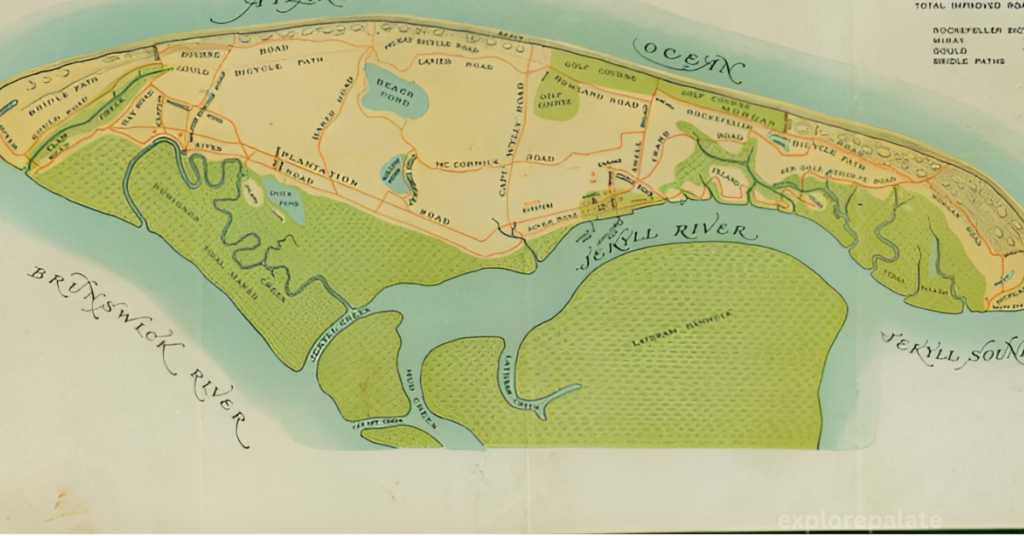
To reach Driftwood Beach, head to North Beachview Drive near the Clam Creek Picnic Area or Villas by the Sea Resort after entering through the Jekyll Island Entry Gate.
Driftwood beach parking
Parking for Driftwood Beach is available along North Beachview Drive with several beach access points from a paved parking area. There is a fee to park, and spaces are limited, with overnight parking not permitted.
How long is the walk from the parking lot?
From the Driftwood Beach parking area, a designated path leads you directly to the beach. The path is flat and relatively unobstructed, taking only a few minutes to complete on foot.
Conclusion
In essence, Driftwood Beach on Jekyll Island is a natural wonder that offers a unique, serene experience among its hauntingly beautiful driftwood landscapes. As 2024 approaches, it is otherworldly beauty and tranquil atmosphere continue to make it a captivating destination for visitors seeking a blend of adventure, photography, and relaxation on the Georgia coast.
You Might Also Like
FAQs
What is the story behind the Driftwood Beach Jekyll Island?
The beach and its iconic driftwood formed as a result of decades of erosion. What was once a maritime forest is now a sandy shore lined with weathered tree trunks and branches, creating a sight that’s truly unique to the Golden Isles.
Is it illegal to take driftwood from Jekyll Island?
Although driftwood is a popular item to collect for making artwork, décor, and furniture or to use in landscaping, removing driftwood from Jekyll Island’s Driftwood Beach is strictly prohibited. Visitors are welcome to collect empty shells and dead sand dollars, but all other natural materials should be left behind.
What is so special about Jekyll Island?
Jekyll Island, Georgia, is a unique, tranquil island left mostly undisturbed by the constant march of time. Located just across the water from its nearby neighbor St. Simons Island, Jekyll Island boasts over eight miles of white sandy beaches and an amazing degree of privacy and protected natural habitat.
Why was Jekyll Island abandoned?
The Jekyll Island Club never bounced back from the Great Depression, when many of its members resigned, and it closed in 1942. Today, its former clubhouse and cottages are National Historic Landmarks. But the debates at and about the conference on Jekyll Island remain relevant today.
What is the story behind Jekyll Island?
General James Oglethorpe founded the colony of Georgia and named Jekyll Island in honor of Sir Joseph Jekyll, his friend and financier from England. Major William Horton was granted Jekyll Island. He created a plantation from which he provided food to the soldiers and families of Ft. Frederica, on St.

